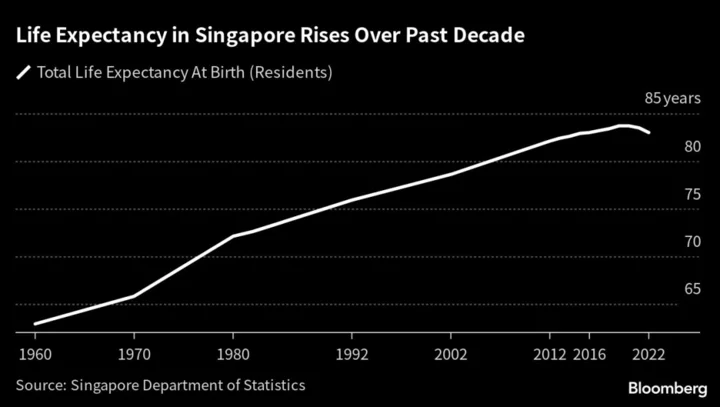In the wheelhouse of a crab boat named Heidi Sue, Mike Pettis watched the gray whale surface and shoot water through its blowhole.
Tangled around its tail was a polypropylene rope used to pull up crab traps. It took two men with serrated knives 40 minutes to free the whale, which swam away with a small piece of rope still embedded in its skin. That was in 2004, off the waters of Waldport, Oregon.
Pettis, a crab fisherman, said it’s the only time in his 44 years of fishing he has ever seen a whale caught in crab lines, and he believes that is proof such encounters are “extremely rare.”
Pettis is among a number of veteran crabbers who fear regulators are on the cusp of curtailing the lucrative industry with overregulation to protect whales.
Humpbacks, which migrate off Oregon’s coast, and other whales can get caught in the vertical ropes connected to the heavy traps and drag them around for months, leaving the mammals injured, starved or so exhausted that they can drown.
The Oregon Fish and Wildlife Commission is expected to vote Friday on whether to permanently set stricter rules and pot limits put in place in 2020 to protect whales. The restrictions, which were originally supposed to end after this season, would reduce the number of traps, known as pots, and how deep they can drop in the spring and summer months when humpbacks are more likely to encounter them.
The move comes during a turbulent period as Oregon’s Dungeness crab fishery contends with warming oceans, smaller crabs and shortened or canceled seasons due to high levels of domoic acid, a naturally occurring neurotoxin caused by algae blooms that makes the crabs inedible.
The debate in the Pacific Northwest is a microcosm of the broader struggle nationwide to address the urgent problem of whale entanglements without wiping out commercial fishermen. California and the U.S. East Coast have taken similar actions to protect whales.
The industry, a backbone of the Pacific Northwest’s commercial fishing industry, can yield millions of pounds of crab in a good year and rake in tens of millions of dollars annually. In 2021-2022, Oregon crabbers landed more than 17 million pounds (7.7 million kilograms) and delivered a record $91 million in crab due to high market prices.
Coming off such a strong year, tension over potential permanent regulations is high.
“As long as we don’t have a huge increase in entanglements, we think that we shouldn’t go any further than what we’ve already done,” Pettis said. “Extending what we have might not be a tragedy, but enough’s enough."
Fish and wildlife authorities say the measures are needed to protect whales and a vibrant economy.
“We’re trying to strike a balance between conservation and recovery of whale populations, which is mandated under federal law, and having a thriving Dungeness crab fishery,” said Troy Buell, head of the Oregon Department of Fish & Wildlife’s State Fishery Management Program.
Oregon’s current pot limits are enforced at the start of the season in December and reduced an extra 20%, with an added 240-foot (73-meter) depth limit, from May 1 through the end of the season, when humpbacks are most common along the Oregon coast.
There are two distinct populations of humpback whales in West Coast waters. The Mexico population is classified as threatened under the Endangered Species Act. These whales breed and calve along the Pacific coast of Mexico and feed from California to Alaska’s Aleutian Islands.
The Central America population is endangered. They breed and calve in waters off Costa Rica, Guatemala and other Central American countries. In summer, they swim north to feed in waters off California, Oregon, Washington and British Columbia.
Over an eight-year period ending in 2021, an average of 35 entanglements were reported annually on the West Coast, according to the National Oceanic and Atmospheric Administration, though the number could be higher. Some are never observed or reported.
Environmentalists say current restrictions haven't gone far enough.
“Unfortunately, what we haven’t seen happen in the last two to three years while these measures were in place was really any meaningful reduction in the number of whales entangled, including those entanglements that could be identified to Oregon and commercial Dungeness crab gear," said Francine Kershaw, a senior marine scientist at the Natural Resources Defense Council.
In the last decade, nine humpbacks were entangled in Oregon Dungeness crab gear In 2022, two were tied to the state, NOAA reported.
To effectively reduce entanglement risk, the number of traps in the water must be reduced by 40%, trap depths should be restricted to 168 feet (51 meters) and those rules should start earlier, on April 15, to align with peak exposure to whales, Kershaw said.
Crabbers say the depth restrictions already have impacted their ability to turn a profit.
Pettis said his fleet switched to halibut fishing along the Oregon coast after May 1, when crab pots couldn't sink deeper than 240 feet (73 meters), which he said cost him “a significant amount of money.”
Fish and wildlife officials question whether depth limits have a large impact on profits in late-season months, when there typically is a crabbing decline anyway.
“That doesn’t mean that the measures don’t have an economic impact," Buell said. ”They do, (but) we think it’s modest."
___
Komenda reported from Seattle.









